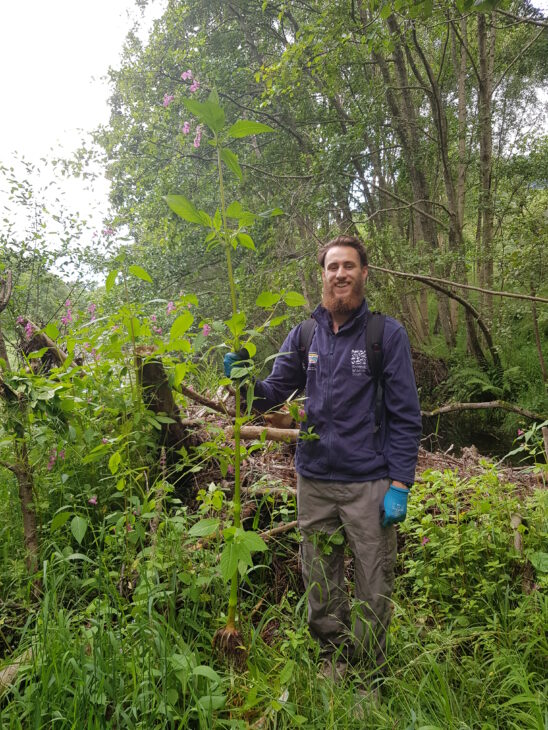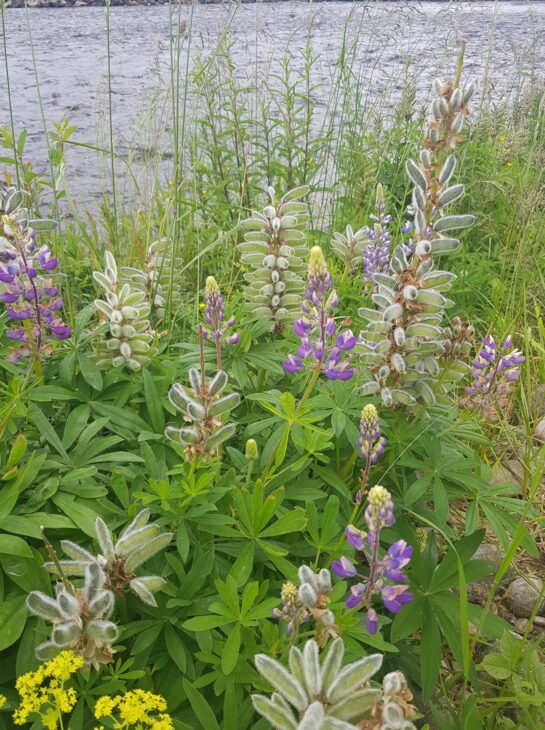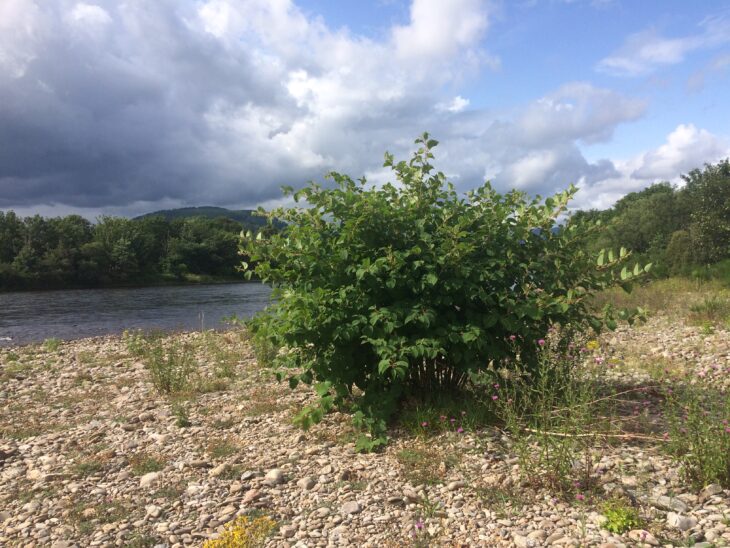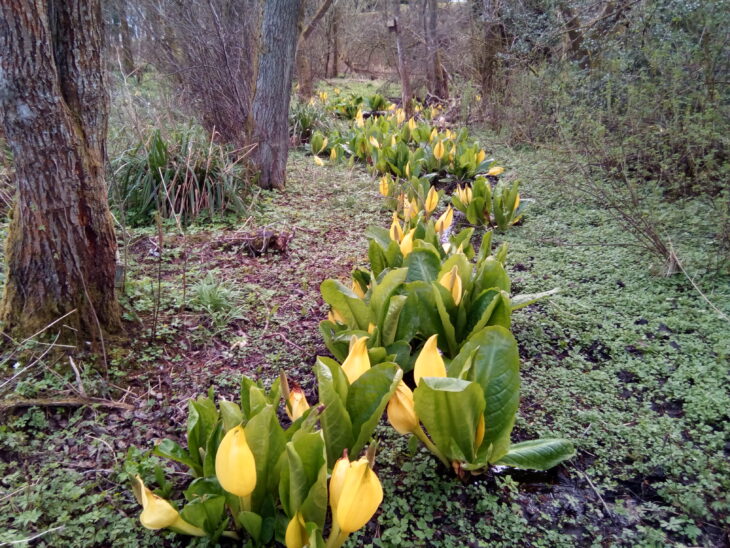Invasive Garden Escapes
Arrays of colourful, fragrant and exotic plants are often displayed in peoples’ gardens, creating a tranquil escape for their cultivators and attracting a monopoly of wildlife. But what happens when these plants escape outwith the realm of the humble garden?
This threat is already upon us, with many unwanted invasive species being discovered within Trust’s reserves and their surrounding areas. Persistently seeking them out for removal, is a challenging but essential task in preventing the repercussions of invasive species out-competing our wildflowers.
Dangerous discoveries
Himalayan Balsam (Impatiens glandulifera)
Introduced to Europe in the 19th century, Himalayan balsam has been dominating widespread areas of waterside and woodland habitats. “But the bees love them!” …yes, however they are so attracted to the flowers of the Balsam, it is hard for our wildflowers to compete for their attention! This in turn means that there will be less succession of their growth in following years, due to a lack of pollination.
With fast growing stems and explosive seed pods occurring shortly after it flowers, balsam can take over habitats at an alarming rate. It’s only downfall being its shallow roots and the tenacity of our ranger team to pull them out!

Lupin (Lupinus polyphyllus)
Like balsam, lupins are also a favourite for pollinators and (if managed correctly away from water courses) provide a great deal of colour and joy in gardens throughout the country. However, as a non-native to the UK, once escaped Lupin has made itself quite at home here, establishing its roots deep into the ground. This growth can rapidly overcrowd our wildflowers and other native plants trying to get established, filling a large niche where instead there should be a great deal of diversity.
Similar to balsam, lupin generates seed pods each year from its brightly flowering heads which, if allowed, will burst and send seeds along a water course to disperse into habitats further downstream.

Japanese Knotweed (Reynoutria japonica)
Knotweed is no longer planted as an architectural garden feature due to its destructive capability, but originally was brought to the UK for this very purpose. In the time since its introduction it has made a huge and unwelcome impact in its new environment. Now its cultivation is under strict management, requiring specialised methods of removal and ongoing expensive management, due to its highly resilient rhizome structure. Even the smallest piece of rhizome left in the soil will enable the plant to continue to generate new stems.
Left unchecked knotweed can grow up to 2 metres high, shading out all other vegetation, whilst its roots cause untold damage to the foundations of buildings. Under law it is prohibited to have caused its escape, or to deposit any part of it with your garden waste.

Skunk Cabbage (Lysichiton americanus)
This bog-dwelling deviant came to the UK from North America, to be used as an ornamental water feature in gardens. Its humongous size and striking yellow flowers give it an appeal of grandeur, but is less so desired amongst our wildlife. Being a water loving plant, skunk cabbage is frequently found alongside river catchments. This is the worst place it could settle, since it can quickly sprout up along the waters edge, allowing the current to carry its seed a great distance.
Like knotweed, its rhizomes are strong and dense, with individual plants existing close together. Even a small sized plant requires large tools and some hot, sweaty digging to try and pry it out of the water bed.
It may seem unlikely that your unsuspecting garden plants can have such an impact and ability to spread, but with the ideal habitat, weather requirements, and some helpful animals to also scatter the seed.. the result becomes inevitable.

What can you do?
If you catch a glimpse of any of the species listed (with the exception of lupin) in your area, you can alert SISI (Scottish Invasive Species Initiative), or if found on your own property, execute proper measures of control, removal and disposal.
There are hundreds of plants designed to flourish in your garden, one helpful source to find out which may best suit you is through this site.
Members of the public are always welcome on our conservation days where you can assist in invasive species removal with the Ranger team. We have additional dates coming up on the 19th and 29th August, 4th and 12th of September.
If you are interested please contact Perthshire Ranger ‘Raz’ for further details; perthshireranger@scottishwildlifetrust.org.uk
Keep an eye out for our future blogs to find out how we get on with clearing such pesky plants!
Helen Lancaster – Assistant ranger
Help protect Scotland’s wildlife
Our work to save Scotland’s wildlife is made possible thanks to the generosity of our members and supporters.
Join today from just £3 a month to help protect the species you love.
Preface
Arrays of colourful, fragrant and exotic plants are often displayed in peoples’ gardens, creating a tranquil escape for their cultivators and attracting a monopoly of wildlife. But what happens when …
